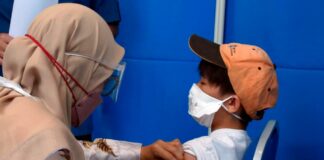GEORGE TOWN, March 3 (Bernama) — Universiti Sains Malaysia (USM) today signed two Memoranda of Agreement (MoAs) with the Social Security Organisation (Socso) to share expertise in the field of robotics and workplace accident management.
USM vice-chancellor Prof Dr Faisal Rafiq Mahamd Adikan signed on behalf of the university, while Socso was represented by its chief executive Datuk Seri Dr Mohammed Azman Aziz Mohammed.
Faisal Rafiq said the first MoA would see cooperation between USAINS Infotech Sdn Bhd and Socso in a study titled ‘Investigating the Effectiveness of Return to Work (RTW) and Rehabilitation Interventions Implementation’.
“USM will assist Socso to study the effectiveness of the implementation of RTW and the Socso Rehabilitation Unit which trains employers and competent people on how to prevent accidents through early detection or prevention of possible injury, and the need for rehabilitation interventions,” he said after the signing ceremony here.
According to Faisal Rafiq, the findings from the study will help USM and Socso achieve RTW and rehabilitation initiatives, which is the redistribution of responsibilities to prevent accidents and injuries at work.
USM-MOA 2 (LAST) GEORGE TOWN
Faisal Rafiq said the study would also examine the willingness of stakeholders such as employers and trade unions to play a role in providing RTW support and rehabilitation services.
Meanwhile, USM Health Campus director Dr Ahmad Sukari Halim who was present at the event said that through the second MoA, the USM Hospital (HUSM) and Pusat Rehabilitasi Perkeso Sdn Bhd would work together on the rental of Hybrid Assistive Limbs or HAL, aimed at improving the quality of medical rehabilitation of patients.
He said HUSM would use the robots to improve recovery rates of stroke patients and those with neuro-motor injuries, making it the first teaching hospital in Malaysia to use Cybernics-based robotics that combines mechanical engineering, artificial intelligence and neuro-bioelectric technology.
“We have six robots that will be used – three robots for patients with lower-limb issues, two robots for a single joint while another for lumbar (lower back) that can be utilised by bedridden Socso patients such as those suffering from stroke and the like. For non-Socso patients, they will be charged rates similar to those in private clinics.
Dr Ahmad Sukari, who is also HUSM director, said the project led by Prof Dr Shaharum Shamsuddin from USM’s School of Health Sciences is expected to be fully operational by August.
He said patients using HAL technology would typically be required to undergo three sessions at HUSM, but it would also depend on the condition of the patients.



















